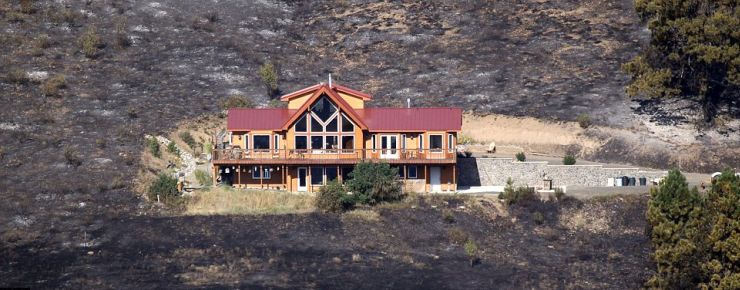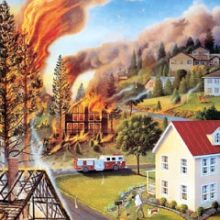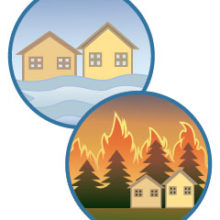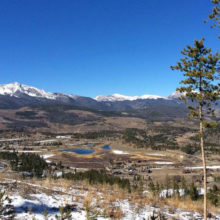The Firewise Communities/USA® Recognition Program often is mentioned as a potential remedy. However, Firewise focuses on increasing safety and was not designed to lower suppression costs.
This lack of evidence that Firewise reduces wildfire suppression costs suggests that policy makers attempting to address future costs are better served focusing on other solutions such as limiting future development in high risk areas.
Background
The costs and risks of wildfire suppression are growing tremendously across the West. Six of the worst fire seasons since 1960 have occurred since 2000, and the loss of lives also has increased, as evidenced by the 2013 Yarnell fire in Arizona.
Not surprisingly, wildfire protection costs also have risen substantially. In the 1990s, the average cost of federal wildfire protection and suppression was less than $1 billion annually. Since 2002, the costs of federal wildfire protection and suppression has averaged more than $3 billion per year.
Our research finds no evidence of a relationship
between wildfire suppression costs and Firewise participation.
Bigger wildfires are generally the result of several factors. First, the amount of biomass fuels has risen. Second, changing climatic conditions—higher temperatures, widespread drought, earlier snowmelt and spring growth, and expanded insect and disease infestations—have made forests more susceptible to fire.
A third factor drives up fire risk as well as fire costs: home development in the WUI—areas of private homes near fire-prone public lands. Today, only about 16 percent of the WUI in the West is developed, with the remaining 84 percent open for development. Residential growth on these lands is primarily a local responsibility, but state and federal governments bear the costs of wildfire protection.
Research Summary
Our manuscript (PDF) finds no evidence of suppression cost reduction in association with Firewise participation. While Firewise-type activities can improve safety, they are not sufficient to control the rising costs of protecting public safety and structures in the WUI from wildfires.
Although sometimes considered a solution to rising suppression costs, the Firewise Program is intended to improve safety for residents, firefighters, and structures, and is not designed to lower suppression costs. The lack of evidence that Firewise reduces suppression costs suggests that policy makers attempting to address increasing suppression costs are better served focusing on other solutions, including limiting future development in high risk areas.
The wildfire characteristics we identify as being positively associated with suppression costs—fire size, duration, and road count—are similarly identified by other studies. Other studies also find a significant relationship between suppression costs and measures of nearby housing.
Interviews on Firewise
Firewise is designed to play a role in increasing wildfire safety in built communities. As part of our research, Headwaters Economics interviewed(PDF) 16 Incident Commanders (ICs) of large and complex western wildfires; asking them whether Firewise altered 1) the risk to firefighter safety, 2) the ability to successfully save structures, and 3) wildfire suppression costs.
The ICs interviewed in general did not believe they had enough evidence to comment on whether Firewise alters suppression costs. They did express a number of common beliefs:
- Community wildfire preparedness programs, such as Firewise, can help increase firefighter safety and the likelihood of successful structure protection.
- Firewise and similar programs consistently result in improved communication among residents and first responders, which increases the efficiency of firefighting.
- Defensible space, including fuel treatments, should be created at the parcel, community and landscape scale. Community scale treatments, such as fuel breaks, should be applied more frequently in wildfire preparedness programs, including Firewise.
- Variability in the implementation of Firewise measures within communities is a problem. The probability of success in managing risk within Firewise Communities was perceived to be limited by “patchy” landowner participation.
Policy Implications
The costs of fighting wildfires has become a major policy issue in the United States, and there is general agreement that both the area burned by wildfires and the frequency of large fires, often termed “mega-fires,” will increase in coming decades.
As a result, policy makers, land owners, and wildfire managers are seeking viable solutions to reduce wildfire risks and costs. One often-talked about remedy is the voluntary Firewise Program. Such efforts—focusing largely on reducing fuels and making structures safer from fires—can provide a safer environment for firefighters and enable more structures to be saved.
The Firewise Program was not designed to lower suppression costs, and our research finds no evidence of a relationship between wildfire suppression costs and Firewise participation.
The lack of evidence that Firewise reduces suppression costs suggests that policy makers attempting to address increasing wildfire suppression costs are better served focusing on other solutions, such as shifting costs to the local jurisdictions and property owners incurring wildfire liabilities and limiting future development in fire-prone landscapes.
The challenges of wildfire suppression are two-fold and necessitate different approaches for addressing issues in built environments compared to where no development yet exists. In wildfire-prone areas with built homes, suppression resources and mitigation efforts, including the Firewise Program, are critical for protecting people and property.
However, because the vast majority of private land in the western WUI is not yet developed (84%), solutions are needed to address the potential for expanded development and associated wildfire risk. For now, it appears that the Firewise Program is not a solution for reining in suppression costs when wildfires threaten communities.
Citation
The manuscript (PDF) has a complete discussion of methods, and it should be cited as Gude P.H., R. Rasker, M. Essen, M. Delorey, M.M. Lawson. “An Empirical Investigation of the Effect of the Firewise Program on Wildfire Suppression Costs.”




